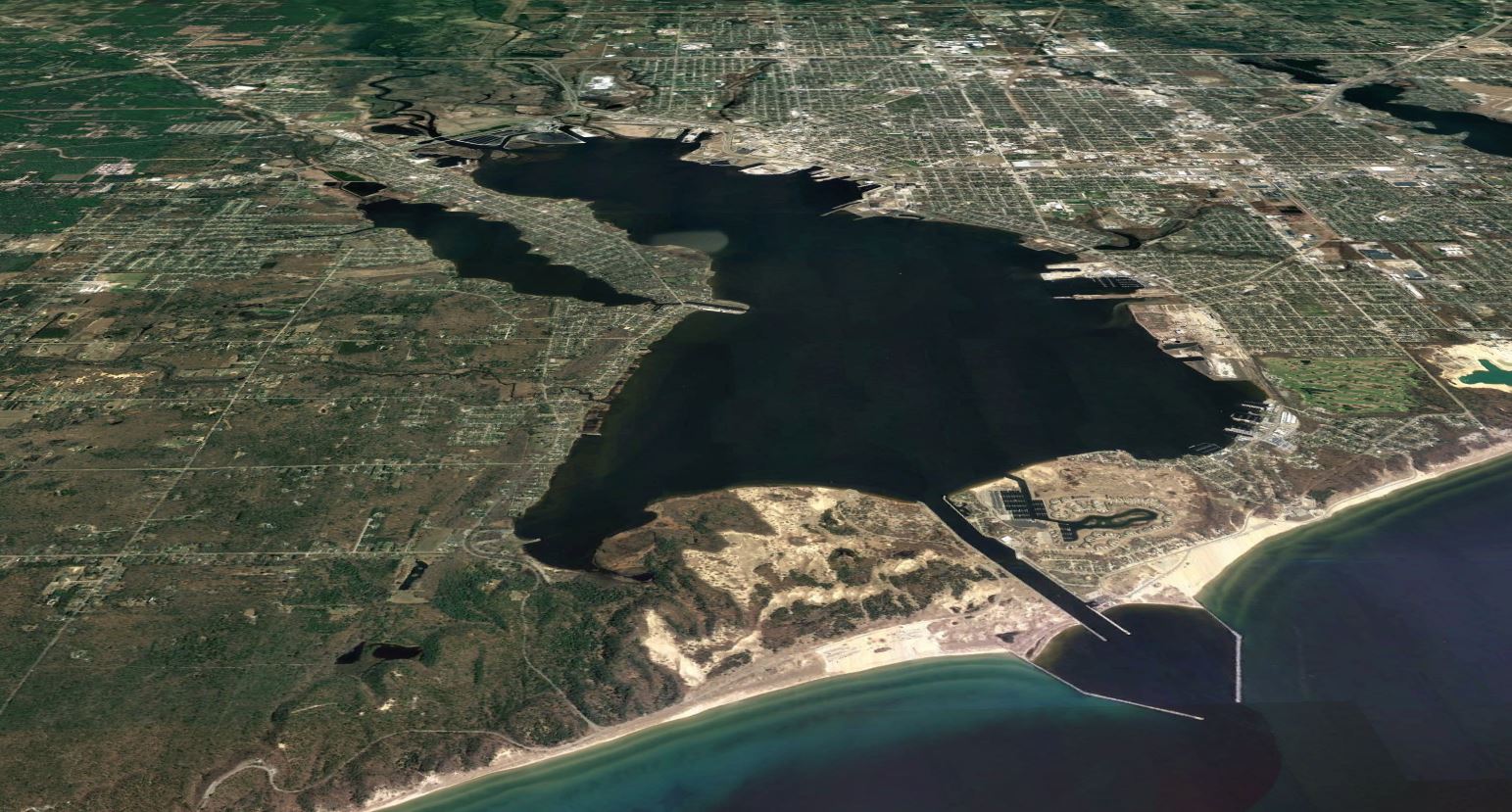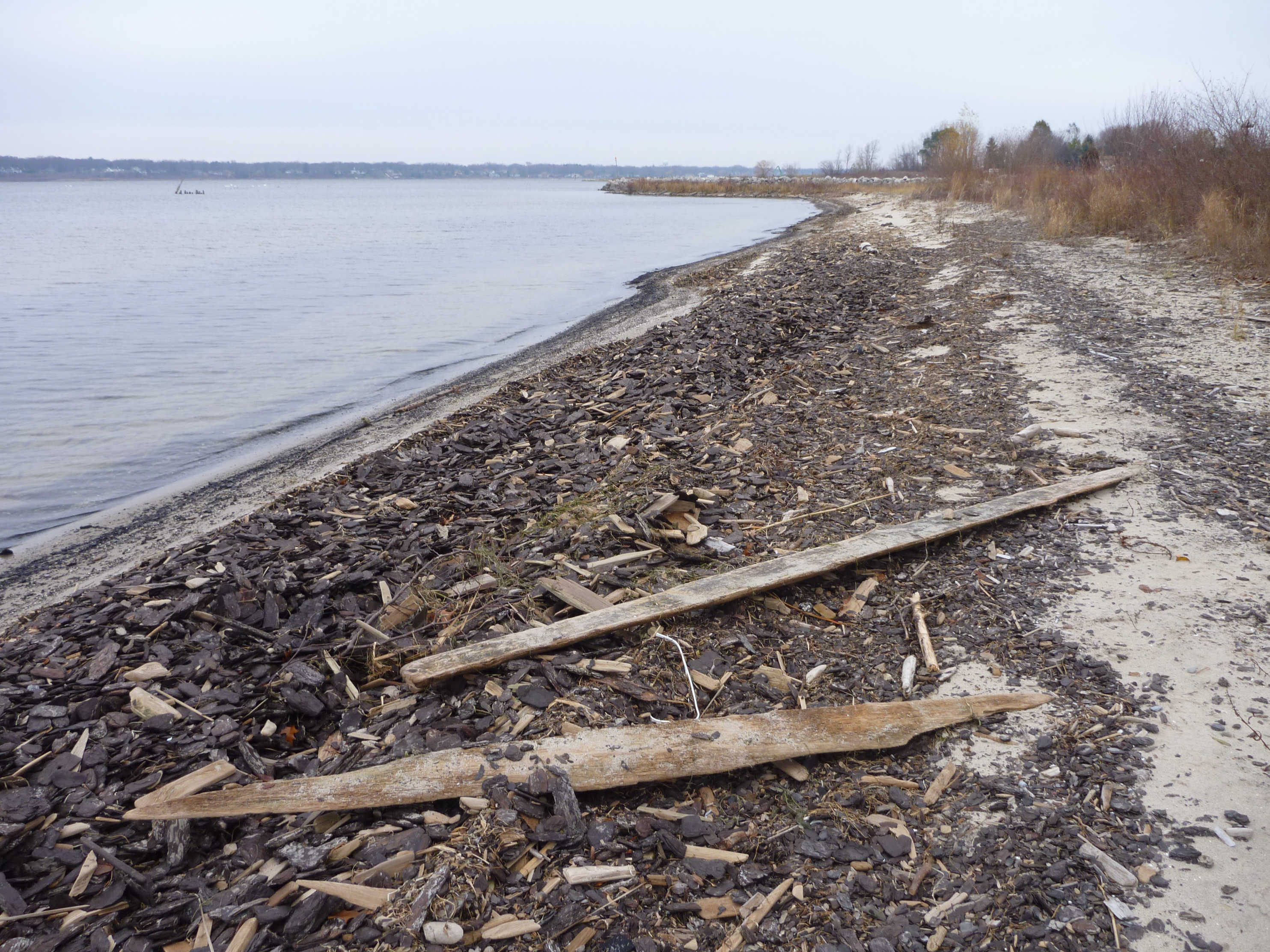



Muskegon Lake is a 4,232 acre drowned river mouth located where the Muskegon River drains into the east end of the lake. On the western end, the lake is connected to Lake Michigan by a maintained deep water navigation channel. Drowned river mouths are common estuary types found along the eastern coast of Lake Michigan amongst the largest assemblage of freshwater sand dunes in the world.
Image: Muskegon Lake, Michigan credit Google Earth.The 19th century lumber boom resulted in the first major wave of habitat disturbance to Muskegon Lake and its system of wetlands, marshes, riparian forests, and sand dunes. Since the late 1800s, several other industries were based there including chemical and petrochemical companies, foundries, a coal-fired power plant, and a paper mill. Muskegon Lake has suffered water quality concerns and habitat degradation from extensive shoreline filling and sediment contamination from compounds such as mercury and polycyclic aromatic hydrocarbons. These changes resulted in significant degradation of benthic communities in the lake, local fish and wildlife populations as well as their habitat. Negative health impacts associated with drinking water restrictions, undesirable algae, restrictions on fish and wildlife consumption and economic consequences for Muskegon residents.
Image: Historic photo of lumber mill credit Lakeshore Museum Center archives.The historic degradation in Muskegon Lake led to it being designated an Area of Concern (AOC) under the Great Lakes Water Quality Agreement in 1985. Because of this designation, Muskegon Lake has been subject to numerous coordinated habitat restoration and conservation efforts under a locally driven action plan. Significant habitat restoration began in 2009 with a grant under the American Recovery and Reinvestment Act. The initial goals of the restoration work were exceeded when 208,620 metric tons of unnatural fill were removed, and 32.3 acres of aquatic habitat and 13,073 linear feet of shoreline were restored at 15 sites around Muskegon Lake.
Muskegon Lake now boasts a healthy recreational fishery for species including walleye, various salmon and trout, northern pike, small and largemouth bass, sunfish, yellow perch, and white bass. The return of a spawning population of lake sturgeon is currently being monitored within the HFA.



